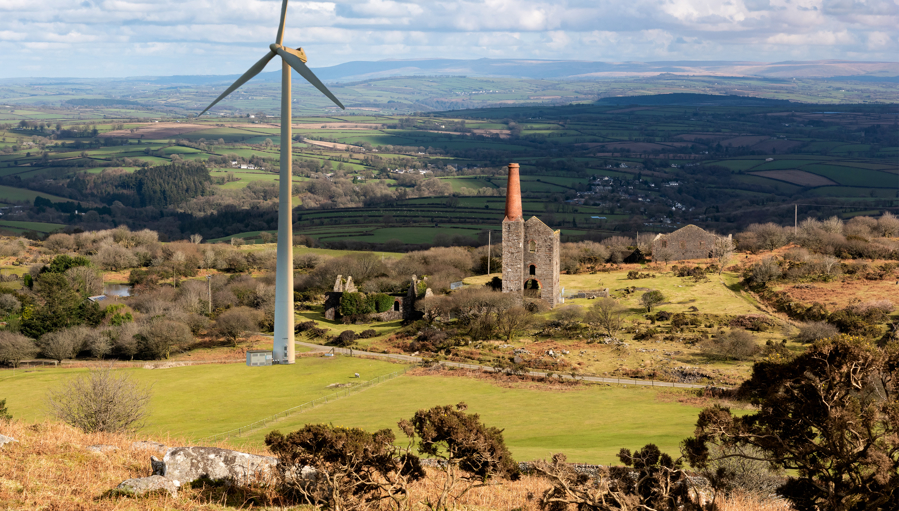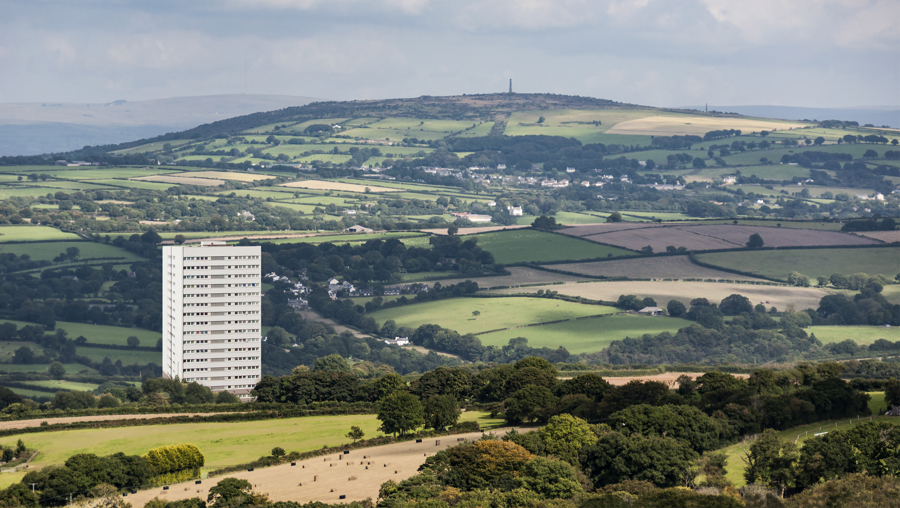What is the ‘setting’ of the World Heritage Site?
After looking at the historic and modern mapping online you may find that your project, while being within the World Heritage Site, does not directly affect any Attributes of OUV. There may still be potential, however, for your project to harm the visual ‘setting’, i.e. the space around an individual Attribute or a number of these if more than one is present. A simple illustration of how this may occur is shown in the photos below.
The first image shows a distinctive Cornish type engine house within a moorland mining landscape and this tall building is currently the dominant feature in the scene. If a competing tall feature was introduced, however, this may in turn become the new dominant feature, thereby reducing the visual prominence of the engine house. The presence of the wind turbine, as shown in the second photo, replaces the engine house as the dominant feature in the scene and therefore harms the ‘setting’ of the engine house, and the OUV of the World Heritage Site.
Harmful impacts on the landscape setting of the Site due to inappropriate development outside the World Heritage Site Areas
Given that the WHS comprises ten separate Areas, it is possible for developments occurring outside the Site and between Areas to potentially impact on the wider landscape setting of the WHS. This may occur, perhaps, if a particularly tall building were to be constructed between two adjoining Areas, as shown in the photo montage below.
While the above montage is an extreme example prepared for the purposes of this guidance, the view eastwards of Kit Hill (Area A10) from Caradon Hill (Area A9) illustrates well the close proximity of some adjoining Areas of the WHS. The potential for harm through out-of-scale and visually disrupting development here is clear.


